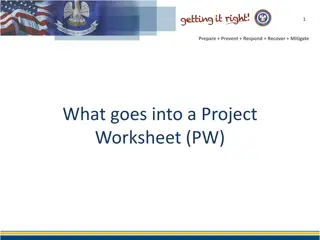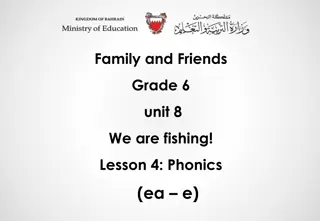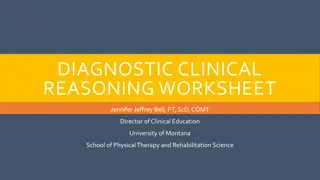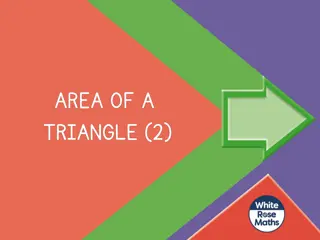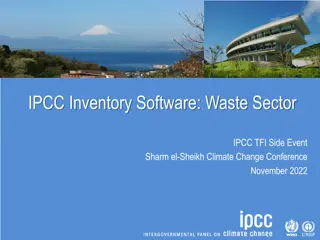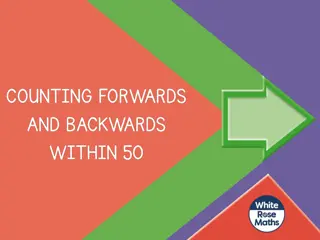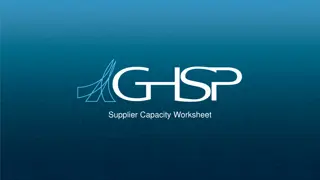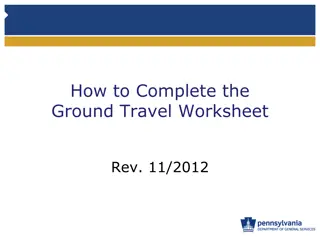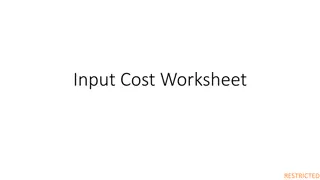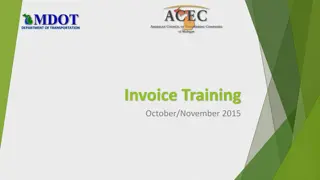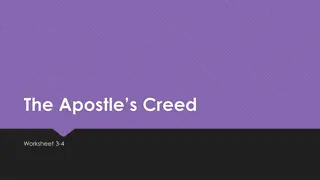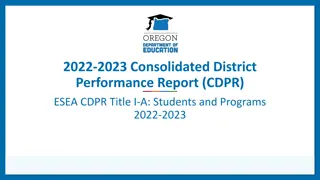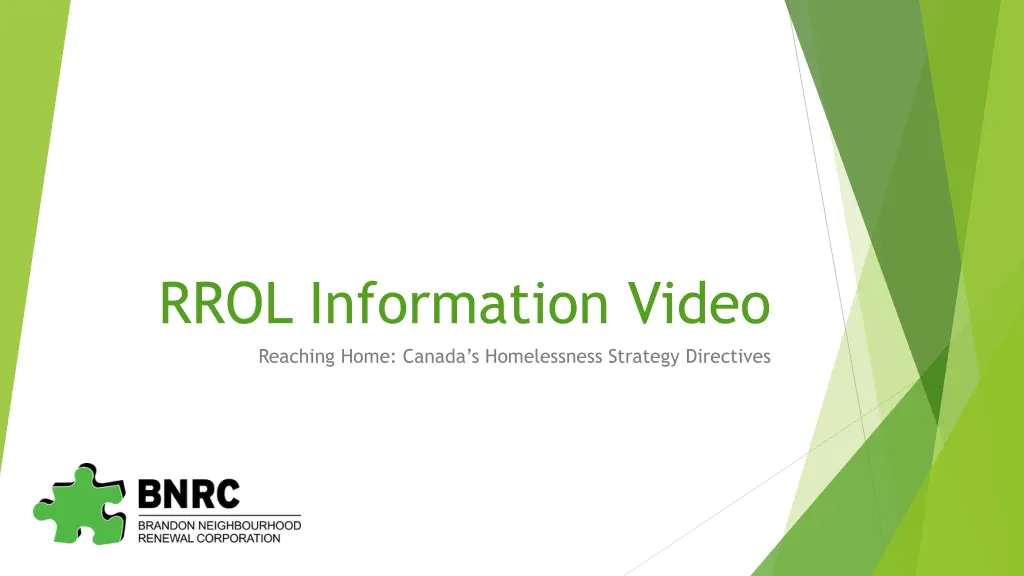
Online Reporting for Reaching Home Canada Homelessness Strategy
"Learn about RROL, Results Reporting Online, a crucial system for annual data collection and reporting for funded projects under Canada's Homelessness Strategy. Discover how organizations can use tools provided by HICC and BNRC to collect necessary data efficiently."
Download Presentation

Please find below an Image/Link to download the presentation.
The content on the website is provided AS IS for your information and personal use only. It may not be sold, licensed, or shared on other websites without obtaining consent from the author. If you encounter any issues during the download, it is possible that the publisher has removed the file from their server.
You are allowed to download the files provided on this website for personal or commercial use, subject to the condition that they are used lawfully. All files are the property of their respective owners.
The content on the website is provided AS IS for your information and personal use only. It may not be sold, licensed, or shared on other websites without obtaining consent from the author.
E N D
Presentation Transcript
RROL Information Video Reaching Home: Canada s Homelessness Strategy Directives
RROL Information & How-To What is RROL? What are the Categories within RROL? HICC (Housing, Infrastructure & Communities Canada) Worksheet BNRC (Brandon Neighbourhood Renewal Corporation) Worksheet A copy of this presentation will be provided along with copies of each Data Collection Form
What is RROL? RROL stands for Results Reporting Online and is also referred to as Annual Results Reaching Home funding recipients are required to provide project results data on an annual basis for some of the funded RH activities The data is used by HICC to account for the use of public funds, demonstrate the results achieved by RH funded projects, and to inform program and policy development Project organizations are responsible for collecting Annual Results data for each fiscal year of their project and the BNRC is responsible for submitting the data to HICC by the deadline of late May. NOTE** since some projects may receive funding from multiple sources, it is their responsibility to determine and report only the results that are attributable to RH funding
What is RROL? In order to collect the data required for RROL, organizations can use the Annual Results Data Collection Tool provided by HICC or the RROL Data Collection Worksheet created by BNRC. The use of these tools are not mandatory, but they have been designed to support the collection of results in a way that mirrors the data reporting system. If an organization chooses not to use these tools, they must ensure the data they are collecting matches the data fields of the online reporting system HICC recognizes that the Annual Results reporting indicators do not entirely reflect the extent of the important services that organizations are providing and the effort that is involved. The Successes and Challenges qualitative reporting section is a valuable way to reflect achievements and challenges that are difficult to quantify with numbers.
What are the Categories in RROL? Housing Housing Placement Determining an individual s or family s needs and preferences for housing and related supports Securing housing by working with private and public local real estate, landlord associations, and home communities Providing landlord-tenant services for an individual or family that has moved into housing. This includes, for example, mediation and problem-solving when a person is first housed (e.g., within the first three months) Providing more intensive housing search support (e.g., accompaniment to viewings). A Housing Placement does not include referring an individual or providing information on housing in the community. A placement into housing must occur. A 12-month follow-up is required for individuals placed into housing.
What are the Categories in RROL? Housing Housing Placement - Data Collection Requirements By providing support in this activity area, the following data must be collected and reported in the Annual report at the end of the fiscal reporting period: Number of people placed into housing during the year; Number of days it took to place an individual into housing; Demographic data of the individuals placed Data collected at 12 months following housing placement: Number of people who did not remain housed at 12 months; Reasons for not remaining housed; Number of people who successfully exited at or before 12 months; Number of people who were still housed at 12 months and still require supports
What are the Categories in RROL? Housing Short-Term Rental Assistance This Category was previously referred to as Emergency Housing reasonable funding used to help an individual cover housing costs in the short term (e.g., pay rent). The funding is to be time-limited Maximum 6 months. It provides a bridge for individuals who received a housing placement and are waiting to access longer-term supports including rent supplements from provincial, territorial or municipal programs, or from the Canadian Housing Benefit. Short-term financial assistance in the context of a rapid re-housing project (up to a maximum of six months). Paying the cost of a maximum of one month of rent for a market rental unit to hold it for a new tenant exiting homelessness
What are the Categories in RROL? Housing Short-Term Rental Assistance Data Collection Requirements By providing supports in this activity area, the following data must be collected and reported in the Annual report at the end of the fiscal reporting period: Total number of people who benefited from short-term rental assistance No demographics or follow-ups are required for this category An individual can be counted under BOTH Housing Placement and Short-term Rental Assistance
What are the Categories in RROL? Housing Housing Set-Up Activities that cover costs associated with setting up a housing unit, including: insurance, damage deposit, first and last months rent, maintenance (e.g., painting), moving, furniture, basic groceries and supplies at move-in, etc. Available to all individuals and families, not just those in receipt of Short-term Rental Assistance. Housing Set-Up does NOT need to be reported in the Annual Report at the end of the fiscal reporting period.
What are the Categories in RROL? Prevention & Shelter Diversion Homelessness Prevention Supporting people who are currently housed, but at imminent risk of losing their housing (for example within the next 2 weeks) Supports include: Problem solving with landlords to stop an eviction Working with family and other natural supports to prevent loss of housing Making referrals to prevent relationship breakdown (e.g., family counselling or mediation) Providing short-term or emergency financial assistance (e.g., to cover the costs of rent or utility arrears, cleaning/repairs to a rental unit so that it is safe, or groceries to help with that month s budget) Finding another housing option before a tenancy ends, or before a youth ages out of care or leaves a family home
What are the Categories in RROL? Prevention & Shelter Diversion Shelter Diversion Supporting people who are being discharged from public systems (e.g., health, correctional, and child welfare) to avoid being discharged to emergency shelters or the street Supports include: Problem solving to find places where people can stay (even for a few days), such as with a neighbour, a friend or family. Providing flex funds to cover transportation costs or groceries, to make the transition to the alternative housing option easier Supporting people to move directly into housing when they leave public institutions (e.g., hospital, corrections, or child welfare), so they are not discharged into homelessness Expenses related to responding to emergency situations (e.g., wildfires, floods, building fires ) that are tied directly to supporting people experiencing or at imminent risk of homelessness.
What are the Categories in RROL? Prevention & Shelter Diversion Data Collection Requirements There is a 3-month follow-up requirement for Core Services. These services include Rental assistance, Landlord/family mediation, Utility payments, Trusteeship and other Financial related services. If providing Core services, the following data must be collected and reported in the Annual report at the end of the fiscal reporting period: Number of people who benefited from a Core Service during the year; Number of people (of those reached) that remained housed at 3 months; Number of people (of those reached) that did not remain housed at 3 months; Reasons for not remaining housed. All other types of Prevention and Shelter Diversion services provided under this category are called Secondary Services. A qualitative summary of these services that were delivered during the fiscal reporting period must be provided.
What are the Categories in RROL? Client Support Services Economic Integration Services Activities that aim to support individuals and families economic status or situation. This includes services to help individuals and families obtain: Income assistance, Employment assistance, Education assistance and/or Job-training assistance. Income Assistance connects individuals to existing income benefits and financial assistance (e.g., EIA, child benefits, disability benefits, old age security, or employment insurance) Employment assistance connects individuals to the labour market and assists them to maintain employment and build self-sufficiency. This can include job search assistance or interview preparation. Education Assistance includes connecting individuals to education and training programs, and services to support the successful participation in these programs (e.g., bus passes, clothing or equipment, food and non-alcoholic beverages, childcare costs, and internet access for the duration of the program). Job-training assistance is services such as essential skills development (e.g., reading, document use, numeracy, writing, oral communication, working with others, critical thinking, computer use and continuous learning); and/or life skills (e.g., job interview training, anger management, sessions on healthy relationships, parenting skills development, effective communication, budgeting, cooking, or healthy eating).
What are the Categories in RROL? Client Support Services Economic Integration Services Data Collection Requirements By selecting any of these activity areas, the following data must be collected and reported in the Annual Results report at the end of the fiscal reporting period: Number of people who began receiving income assistance; Number of people who began new paid employment; Number of people who began an education program; Number of people who began a job-training program; Demographic data for the individuals reported under each Economic Integration service.
What are the Categories in RROL? Client Support Services Social & Community Integration Services Supports to improve social integration, for example, costs of participation or provision of recreational/sports activities, cultural programs, support groups, and access to peer supports and mentorship for youth. Enhancing family and natural supports for youth. Indigenous Elder consultation, gathering and preparation of traditional foods. Establishing and maintaining culturally relevant responses and supports to help Indigenous individuals and families (e.g., navigation of urban services, including to help establish and maintain culturally relevant support networks within an urban environment; Indigenous language and culture classes).
What are the Categories in RROL? Client Support Services Social & Community Integration Services Data Collection Requirements By providing supports in this activity area, the following data must be collected and reported in the Annual report at the end of the fiscal reporting period: Total number of people who benefited from social & community integration services No demographics or follow-ups are required for this category
What are the Categories in RROL? Client Support Services Basic Needs Services support outcomes that contribute to a reduction in homelessness Supplies to support individuals experiencing unsheltered homelessness, such as tarps, tents, or sleeping bags Clothing, footwear and blankets. Storage for belongings (up to three months) Culturally relevant supports for Indigenous peoples (e.g., cultural ceremonies, traditional supports and activities with the goal of increasing cultural connections and an individual s sense of belonging in a community) Disability supports (e.g., mobility and other assistive devices if not otherwise covered through medical services) Personal identification Transportation to home community or to shelter and other emergency housing services Basic Needs Services do NOT need to be reported in the Annual Report at the end of the fiscal reporting period
What are the Categories in RROL? Capital Investments Capital investments are intended to increase the capacity or improve the quality of facilities that address the needs of individuals and families experiencing or at imminent risk of homelessness This includes construction, renovation, or purchase of Emergency, Transitional or Permanent Supportive Housing or a non-residential facility (drop-in centre, community kitchen, laundry facility, food bank etc.) Purchase of furniture, appliances, machinery, electronic equipment and vehicles Capital Investments only need to be reported in the Annual Report at the end of the FINAL fiscal year of the project.
Data Collection Tools HICC Data Collection Worksheet
Data Collection Tools BNRC Data Collection Worksheet
Laura Wallis reachinghome@bnrc.ca Reaching Home: Canada s Homelessness Strategy Directives


